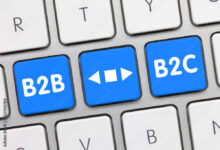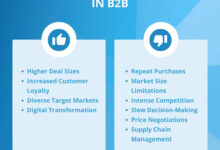b2b2c: 7 Powerful Insights That Transform Modern Commerce
In today’s interconnected digital economy, the b2b2c model is reshaping how businesses connect with end consumers. It’s not just a trend—it’s a strategic evolution merging supply chains, brand trust, and customer experience into one seamless flow.
What Exactly Is the b2b2c Model?

The term b2b2c, short for Business-to-Business-to-Consumer, refers to a hybrid commerce model where one business sells its products or services to another business, which then delivers them to the end consumer. Unlike traditional B2B or B2C models, b2b2c creates a collaborative ecosystem where value is co-created across multiple stakeholders.
Breaking Down the b2b2c Acronym
At first glance, b2b2c might seem like marketing jargon, but it represents a fundamental shift in value delivery. The first ‘B’ stands for the original producer or service provider (e.g., a software developer or manufacturer). The second ‘B’ is the intermediary—such as a retailer, platform, or distributor. The final ‘C’ is the end consumer who ultimately uses the product or service.
- The producer focuses on innovation and scalability.
- The intermediary handles branding, logistics, and customer engagement.
- The consumer benefits from enhanced access, trust, and service quality.
How b2b2c Differs From B2B and B2C
Traditional B2B transactions are purely between companies, often involving bulk orders, long contracts, and minimal consumer visibility. B2C, on the other hand, is direct-to-consumer, emphasizing marketing, user experience, and rapid fulfillment.
In contrast, b2b2c blends the strengths of both. For example, a cloud software company (B) licenses its tools to a bank (B), which then offers personalized financial dashboards to its customers (C). The software brand remains behind the scenes, but its technology directly impacts the end-user experience.
“The b2b2c model is not about disintermediation—it’s about re-intermediation with purpose.” — Harvard Business Review, The Rise of b2b2c Business Models
Why b2b2c Is Gaining Massive Traction
The global shift toward digital platforms, omnichannel experiences, and ecosystem-based competition has made b2b2c not just relevant—but essential. Companies leveraging this model report higher customer retention, faster time-to-market, and improved data sharing across partners.
Digital Transformation as a Catalyst
As industries digitize, the lines between B2B and B2C blur. A manufacturer can no longer afford to be invisible to the end user. With IoT, AI, and real-time analytics, businesses can now track how their products are used downstream—even when sold through third parties.
- Smart appliances collect usage data shared with manufacturers via retailers.
- SaaS platforms integrate with e-commerce sites to offer embedded finance solutions.
- Health tech firms partner with insurance providers to deliver patient-facing apps.
This visibility empowers b2b2c players to innovate based on actual consumer behavior, not just wholesale sales figures.
Consumer Demand for Seamless Experiences
Modern consumers expect frictionless journeys—whether buying online, in-store, or through an app. They don’t care who makes the product; they care about reliability, support, and personalization. The b2b2c model allows brands to maintain quality control while leveraging partners’ distribution networks.
For instance, Apple works with carriers (like Verizon) to sell iPhones. While Verizon handles billing and service plans, Apple ensures the device experience, software updates, and customer support remain consistent. This synergy enhances trust and satisfaction.
Key Industries Embracing b2b2c
The b2b2c model isn’t limited to tech or retail—it’s spreading across sectors where collaboration amplifies value. Let’s explore some of the most prominent adopters.
Retail and E-Commerce Platforms
Marketplaces like Amazon, Shopify, and Alibaba operate on a core b2b2c principle. Third-party sellers (B) use these platforms (B) to reach millions of consumers (C). The platform provides infrastructure, payment processing, and logistics, while sellers focus on product development.
- Amazon’s Fulfilled by Amazon (FBA) enables small businesses to compete globally.
- Shopify’s partnership with Facebook and TikTok allows direct social commerce.
- Alibaba’s 1688.com connects Chinese manufacturers directly to domestic retailers.
These ecosystems thrive because all parties benefit: the platform earns fees, the seller gains reach, and the consumer enjoys choice and convenience.
Financial Services and Fintech
Banks, insurers, and fintech startups are increasingly adopting b2b2c strategies. Rather than building consumer apps from scratch, they embed financial services into non-financial platforms.
For example, Stripe offers APIs that allow e-commerce sites to provide instant loans at checkout. The merchant (B) integrates Stripe’s lending solution (B), enabling shoppers (C) to buy now and pay later—all without leaving the store.
- Klarna partners with retailers to offer installment payments.
- Plaid connects fintech apps to users’ bank accounts via institutional APIs.
- Embedded insurance lets car rental platforms offer coverage powered by insurers.
According to McKinsey, embedded finance could generate $7 trillion in revenue by 2030, largely driven by b2b2c partnerships.
Healthcare and Telemedicine
In healthcare, b2b2c is revolutionizing patient access. Pharmaceutical companies collaborate with telehealth platforms to deliver prescriptions after virtual consultations. Wearable device makers (like Fitbit) partner with health insurers to incentivize fitness through data-sharing programs.
One notable example is Livongo (acquired by Teladoc), which provides diabetes management tools to employers and health plans (B), who then offer them to employees or members (C). The original provider benefits from scale, while the intermediary enhances its service offering.
“b2b2c in healthcare shifts the focus from episodic care to continuous engagement.” — Healthcare Dive
Benefits of the b2b2c Model for All Stakeholders
One of the most compelling aspects of b2b2c is that it creates win-win-win scenarios. When implemented well, all three parties—the original business, the intermediary, and the consumer—gain significant advantages.
For the Original Business (First B)
Manufacturers, SaaS providers, or service creators often lack direct consumer reach. Through b2b2c, they gain access to established customer bases without investing heavily in marketing or distribution.
- Scale rapidly through partner networks.
- Collect valuable end-user data (with consent) to improve products.
- Reduce customer acquisition costs by leveraging partner trust.
- Maintain brand integrity through co-branded experiences.
For example, Salesforce integrates with Slack, allowing enterprise clients to use collaboration tools within CRM workflows. While Slack reaches end users, Salesforce enhances its ecosystem value.
For the Intermediary Business (Second B)
Retailers, platforms, or service aggregators use b2b2c to enrich their offerings. Instead of just reselling, they become solution providers, increasing customer loyalty and average order value.
- Offer differentiated services by bundling third-party innovations.
- Improve customer lifetime value through enhanced experiences.
- Generate new revenue streams via referral fees or revenue sharing.
- Strengthen competitive moat by creating integrated ecosystems.
Walmart’s partnership with Peloton is a prime example. Walmart sells Peloton bikes (B-to-B) and promotes them to its vast customer base (B-to-C), while Peloton gains retail credibility and broader exposure.
For the End Consumer (C)
Consumers are the ultimate beneficiaries of effective b2b2c models. They enjoy better products, smoother experiences, and more personalized services—all without knowing the complexity behind the scenes.
- Access innovative solutions through trusted brands.
- Experience seamless integration across devices and platforms.
- Receive faster support due to shared accountability.
- Enjoy cost savings from efficient supply chains.
Consider smart home systems: Philips Hue bulbs (B) are sold through Best Buy (B) and controlled via the Apple Home app (C). The user gets a unified experience, even though three companies are involved.
Challenges and Risks in b2b2c Implementation
Despite its advantages, the b2b2c model introduces complexity. Misalignment between partners, data privacy concerns, and brand dilution can undermine success if not managed carefully.
Brand Control and Identity Confusion
When a product appears under another company’s branding, the original manufacturer risks becoming invisible. Consumers may attribute success—or failure—to the intermediary, not the innovator.
To mitigate this, clear co-branding agreements and shared messaging guidelines are essential. For example, Intel’s “Intel Inside” campaign successfully maintained brand visibility despite selling chips to OEMs like Dell and HP.
- Use certification badges or logos to assert presence.
- Collaborate on marketing campaigns to ensure mutual recognition.
- Establish service-level agreements (SLAs) for customer support attribution.
Data Sharing and Privacy Concerns
b2b2c relies heavily on data flow between partners. However, regulations like GDPR and CCPA restrict how personal information can be collected and shared. Disputes over data ownership can stall partnerships.
Best practices include:
- Implementing secure, consent-based data pipelines.
- Using anonymized analytics where possible.
- Defining data rights in partnership contracts.
- Adopting zero-trust architectures for API integrations.
A 2023 report by Gartner found that 60% of failed b2b2c initiatives stemmed from poor data governance.
Operational Complexity and Alignment
Aligning sales cycles, inventory systems, and customer service protocols across organizations is no small task. A delay in one partner’s fulfillment can damage the reputation of all.
Solutions include:
- Using integrated ERP and CRM platforms (e.g., SAP, Oracle).
- Establishing joint KPIs and performance dashboards.
- Holding regular cross-functional review meetings.
- Creating shared escalation paths for issue resolution.
Automotive suppliers working with car manufacturers on connected vehicle features must synchronize software updates, warranty terms, and diagnostic tools—requiring deep operational alignment.
Strategies for Building a Successful b2b2c Partnership
Launching a b2b2c initiative requires more than just a handshake. It demands strategic planning, cultural alignment, and technological readiness. Here are proven strategies to ensure success.
Define Clear Roles and Value Propositions
Every partner must understand their role and what they bring to the table. Ambiguity leads to conflict. Use a RACI matrix (Responsible, Accountable, Consulted, Informed) to clarify responsibilities.
- Who owns customer acquisition?
- Who handles technical support?
- Who manages returns and refunds?
- Who controls pricing and promotions?
For example, in Microsoft’s partnership with Lenovo, Microsoft provides Windows OS (B), Lenovo builds and sells laptops (B), and end users (C) benefit from pre-installed software. Both brands are visible, and roles are clearly defined.
Invest in Technology Integration
Seamless b2b2c experiences depend on robust tech infrastructure. APIs, microservices, and cloud platforms enable real-time synchronization of inventory, orders, and customer data.
- Adopt headless commerce architectures for flexibility.
- Use event-driven systems to trigger actions across platforms.
- Leverage AI for predictive analytics and personalization.
- Ensure mobile-first design for consumer touchpoints.
Shopify’s Hydrogen framework and Oxygen hosting allow developers to build custom storefronts that integrate smoothly with backend suppliers—enabling true b2b2c agility.
Co-Create Customer-Centric Experiences
The best b2b2c models put the consumer at the center. This means designing journeys that feel unified, even when multiple brands are involved.
- Map the end-to-end customer journey together.
- Conduct joint usability testing.
- Align tone of voice and visual identity where appropriate.
- Offer unified support channels (e.g., single help portal).
Adobe’s integration with Salesforce allows marketers to deliver personalized content across email, web, and ads—powered by data from both platforms—creating a seamless experience for the end user.
The Future of b2b2c: Trends and Predictions
As technology evolves and consumer expectations rise, the b2b2c model will become even more pervasive. Several key trends are shaping its future trajectory.
Rise of Embedded Commerce
Soon, consumers won’t need to visit standalone stores. Products and services will be embedded directly into the apps and platforms they already use.
- Social media platforms enabling in-app purchases via third-party retailers.
- Productivity tools offering integrated procurement options.
- Streaming services selling merchandise during live events.
This shift means more b2b2c partnerships will form between non-traditional players—like a fitness app partnering with a nutrition brand to offer meal kits.
AI-Powered Personalization at Scale
Artificial intelligence will enable hyper-personalized experiences across b2b2c chains. Machine learning models can analyze consumer behavior and optimize offerings in real time.
- Dynamic pricing based on user profiles and partner margins.
- Recommendation engines that blend first-party and third-party inventory.
- Chatbots that escalate issues to the right partner based on context.
Companies like Dynamic Yield (acquired by McDonald’s) already use AI to personalize digital menus based on weather, time of day, and customer history—showcasing the potential for intelligent b2b2c ecosystems.
Decentralized and Blockchain-Based Models
Blockchain technology could revolutionize b2b2c by enabling transparent, trustless partnerships. Smart contracts can automate revenue sharing, licensing, and compliance.
- Tokenized loyalty programs across partner networks.
- Immutable supply chain tracking from manufacturer to consumer.
- Self-sovereign identity for secure, user-controlled data sharing.
While still emerging, projects like VeChain and Hedera are exploring decentralized b2b2c frameworks for luxury goods and healthcare supply chains.
Real-World Examples of b2b2c Success
Theory is important, but real-world applications prove the viability of the b2b2c model. Let’s examine some standout cases.
Apple and Carriers: A Masterclass in b2b2c
Apple doesn’t sell iPhones directly to most consumers. Instead, it partners with telecom carriers like AT&T, Verizon, and T-Mobile. These carriers (B) offer phones (B) to subscribers (C) with service plans.
Apple maintains strict control over design, software, and user experience, while carriers handle billing, activation, and support. This partnership has enabled Apple to dominate global smartphone markets without building its own telecom infrastructure.
Microsoft and Enterprise Software Resellers
Microsoft licenses its software (e.g., Microsoft 365, Azure) to IT resellers and system integrators. These partners then deploy, customize, and support the solutions for businesses and their employees (C).
The reseller acts as a trusted advisor, while Microsoft provides training, certifications, and technical resources. This b2b2c model allows Microsoft to scale globally while maintaining high service standards.
Unilever and E-Commerce Marketplaces
Consumer goods giant Unilever sells its products (like Dove and Ben & Jerry’s) through Amazon, Walmart.com, and regional e-commerce platforms. These platforms handle last-mile delivery and customer service, while Unilever invests in brand campaigns and product innovation.
Through data-sharing agreements, Unilever gains insights into consumer preferences, enabling faster product iteration and targeted promotions.
What is the main advantage of the b2b2c model?
The main advantage of the b2b2c model is its ability to combine the scalability of B2B partnerships with the customer-centric focus of B2C. It allows businesses to expand their reach, enhance customer experiences, and create shared value across ecosystems—all while leveraging the strengths of each partner.
How does b2b2c improve customer experience?
b2b2c improves customer experience by delivering seamless, integrated solutions. Consumers benefit from trusted intermediaries offering high-quality products backed by reliable support. Behind the scenes, data sharing and operational alignment ensure consistency, personalization, and faster issue resolution.
Can small businesses use the b2b2c model?
Absolutely. Small businesses can join b2b2c ecosystems by partnering with larger platforms. For example, a boutique skincare brand can sell through Sephora (online or in-store), gaining access to a loyal customer base, marketing support, and logistics—without needing to build everything from scratch.
What industries benefit most from b2b2c?
Industries that thrive on distribution networks, digital integration, and customer trust benefit most from b2b2c. These include retail, fintech, healthcare, SaaS, automotive, and consumer electronics. Any sector where end-user experience depends on multiple players can leverage b2b2c effectively.
How do you measure success in a b2b2c partnership?
Success in b2b2c is measured through shared KPIs such as customer acquisition cost (CAC), lifetime value (LTV), Net Promoter Score (NPS), fulfillment accuracy, and revenue growth. Regular joint reviews, transparent data sharing, and aligned incentives are critical to sustaining long-term success.
The b2b2c model is more than a business strategy—it’s a reflection of how modern commerce operates in an interconnected world. By bridging the gap between producers and consumers through trusted intermediaries, b2b2c creates ecosystems of value, innovation, and resilience. As digital transformation accelerates, companies that embrace collaboration, transparency, and customer-centric design will lead the next wave of growth. Whether you’re a startup, a mid-sized firm, or a global enterprise, understanding and leveraging b2b2c isn’t optional—it’s imperative.
Further Reading:




